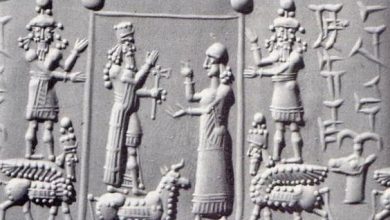The Qilin, often translated as “unicorn,” is a majestic and benevolent creature that holds a significant position in Chinese mythology. Its appearance is said to coincide with the birth or death of a sage or ruler, signifying auspiciousness and prosperity.

Description and Appearance
While often depicted as a unicorn with a single horn, the Qilin’s appearance varies across different sources. It is generally described as a chimerical creature with the body of a deer or horse, the head of a dragon, the tail of an ox, and a single horn on its forehead. Its scales are said to shimmer with a variety of colors, and its voice is described as a gentle chime.
Despite its formidable physique, the Qilin is known for its gentle nature and compassion. It is said to walk on clouds to avoid harming even a blade of grass and possesses an innate ability to discern good from evil.
Significance and Symbolism
The Qilin is one of the four sacred animals in Chinese mythology, alongside the dragon, the phoenix, and the turtle. It is associated with a variety of positive attributes, including:
- Prosperity and good fortune: The Qilin’s appearance is believed to herald a golden age of peace and prosperity.
- Longevity and good health: The Qilin is said to live for thousands of years and is associated with good health and longevity.
- Benevolence and righteousness: The Qilin represents kindness, compassion, and justice.
- Wisdom and intelligence: The Qilin is said to possess great wisdom and is often depicted with a book or scroll.

Role in Folklore and Legends
The Qilin features prominently in various Chinese folktales and legends. Some popular stories include:
- The Birth of Confucius: The Qilin is said to have appeared with a jade tablet bearing the inscription “The birth of a king,” announcing the birth of the great philosopher Confucius.
- The Reign of Emperor Yao: The Qilin is said to have presented a book of good governance to Emperor Yao, signifying his wise and benevolent rule.
- The End of the Zhou Dynasty: The disappearance of the Qilin is said to have marked the decline and fall of the Zhou Dynasty, symbolizing the loss of virtue and order.
The Qilin continues to be a popular motif in Chinese art and culture. It is often depicted in paintings, sculptures, and decorative objects. Its image is also used as a symbol of good luck and fortune.
Comparison to Other Mythological Creatures
While often compared to the Western unicorn, the Qilin holds distinct characteristics and symbolism. Unlike the unicorn, which is often associated with purity and virginity, the Qilin represents a wider range of positive attributes, including wisdom, benevolence, and justice.
Furthermore, the Qilin has a closer parallel to the Kirin of Japanese mythology. Both creatures share similar physical features and symbolic associations, reflecting the cultural exchange between China and Japan throughout history.
Conclusion
The Qilin is a captivating and multifaceted creature that embodies the core values of Chinese culture. Its presence signifies auspiciousness, prosperity, and the triumph of good over evil. Through its enduring presence in folklore and art, the Qilin continues to inspire and guide generations to come.




